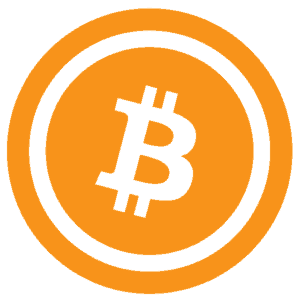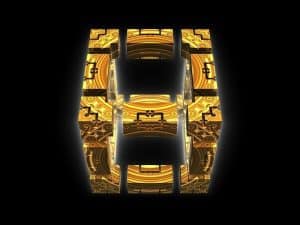Here’s some interesting thoughts on gold and the rise of cryptocurrencies, somewhat surprisingly care of the World Gold Council.
Ever since BitCoin was invented, comparisons have been drawn with gold, often to gold’s detriment. Charles Morris, chief investment officer at Newscape Group and editor of AtlasPulse.com argues that BitCoin and gold can happily co-exist, while technological advances will ultimately work to gold’s benefit…
Gold, BitCoin and Blockchain Technology
Originally published in the WGC Gold Investor
On 2nd March 2017, the price of BitCoin surpassed the price of an ounce of gold for the first time. For those who worry that gold has found a digital rival, it hasn’t – this is merely a nominal coincidence. BitCoin does have something over gold – the market is small (US$40 billion network value) and growing. But gold also has an advantage – the market is deep (US$8 trillion) and it enjoys an unrivalled sense of stability.
BitCoin deserves to appreciate rapidly as it is a growth asset. In that sense, it is more comparable to a social media stock than to gold. Around US$1.5 billion changes hands each day over the BitCoin network. That has risen ten-fold over the past three years – all while bypassing the banking system. Whatever that money is up to, most thinking folk acknowledge the blockchain behind it is a technological masterpiece.
 If we cast our minds back to the era before modern technology, gold stood out as a technology of its time. A universally accepted form of payment, it could be authenticated, measured and exchanged. That simple idea enabled different economies to be calibrated and trade to flourish. Gold’s monetary dominance lasted until relatively recently. In fact, gold’s formal role was only eroded with the rise of modern communications.
If we cast our minds back to the era before modern technology, gold stood out as a technology of its time. A universally accepted form of payment, it could be authenticated, measured and exchanged. That simple idea enabled different economies to be calibrated and trade to flourish. Gold’s monetary dominance lasted until relatively recently. In fact, gold’s formal role was only eroded with the rise of modern communications.
The first big shift occurred in the mid-19th century, when the telegraph was set up, facilitating access to real-time information and paving the way for the current financial system. Communication has become increasingly rapid since then, thanks to the telephone, computers, satellites and the internet, but, with each fresh development, reference to gold became less important.
Even as gold lost much of its formal role, it maintained its credibility and status with central banks and other longterm investors. That informal role is significant as roughly US$250 billion changes hands each day through the gold market. Consider that gold offers no annual income, yet the market remains vibrant – a sign that this is a true and lasting safe-haven. As a result, gold should continue to thrive in the digital age as it remains the ultimate store of value.
Digital gold
The blockchain technology that drives the BitCoin network has one great advantage – it is immutable, which means that past data can never be changed. As such, it is a point of reference that can be trusted by all. And it has big ramifications for gold. Using blockchain, modern communications enable gold to be redistributed round the world at the touch of a button, without ever leaving the vaults.
Hedge fund manager, Adam Cleary of Cavenham Capital, was a pioneer in this field, founding Bullion BitCoin in 2013, just as BitCoin was capturing the public’s imagination. Cleary wanted to make gold freely transferable by piggybacking on the BitCoin blockchain so he created an electronic token backed by gold. Back then, he was ahead of his time but today, his ideas are beginning to take root, as he reveals:
“Following my initial experimental attempts at creating a gold token on the BitCoin blockchain in 2014/15, it is great to see the huge multiplicity of innovation and startups in the space. This shows that the idea of a redeemable digital gold token is sound, but to succeed, above all, this idea requires a highly capitalised, immediately recognisable sponsor with strong market credibility who is highly trusted by gold market participants. The technology is readily available and easy to implement so there is a huge opportunity here for a major gold market player to swoop in and dominate the digital gold market.”
Cleary’s dream was to make gold digital so that it could be transacted around the world in a decentralised manner, enjoying the same anonymity as a cash transaction. However, as he suggests, such a system would require trust and therefore a “recognisable sponsor.” That sponsor would struggle to operate without providing an audit trail to the authorities, which directly contradicts the notion of decentralised and anonymous payments in gold: at least on a grand scale.

Today, many well-known brands such as The Royal Mint are building new gold platforms, using either blockchain or other technologies.
One company, expected to launch in the next few months, will be able to store gold securely in a vaulting service, yet allow you to spend your gold using Master Card. You can also text it, email it or transfer it at the touch of a button, and at no cost. It’s impressive, usable and slick and may well have broad appeal.
This fledgling operation has chosen to abstain from the blockchain, primarily because, in order to achieve the functionality they desired, the system had to settle a transaction in one hundredth of a second. However, this new firm does recognise the appeal of BitCoin’s public record keeping.
And this is the crux. A traditional database must be private, yet a blockchain system can be private or public. If private, the owner maintains control of the system so it is centralised. A public blockchain is the breakthrough design that enables the network to be decentralised.
A growing role for gold
Many gold market participants have dreamt of a decentralised system for gold, yet it needs a brand to provide trust and grow the network. And a brand will be under the control of authorities. This is a fundamental obstacle standing in the way of decentralising gold: someone or some entity must be responsible for the gold in the vaults and reconcile what is shown on the blockchain.
It therefore seems that centralised systems for gold offer the best practical solution. Yet developments in FinTech mean that we can still maintain a balance in gold rather than cash and spend it, as if it were cash, using widely adopted systems such as Master Card or Visa. In so doing, gold’s liquidity will improve further and its central role will be restored.
In an indebted world, there are plenty of reasons why people should want to carry electronic gold in their pockets – and technology is allowing them to do so in a seamless way. Whether or not the systems opt for blockchain over traditional databases isn’t the issue, as they can all succeed in different ways.
In years to come, therefore, historians will probably see the late 20th century as gold’s ‘Dark Age.’ Gold was relevant in the preceding millennia and its relevance has been on the rise again in recent years. At first, technology threatened gold. In the end, technology was its saviour.


Pingback: What to Do With Your Money When Doom Awaits - Asset Allocation - Gold Survival Guide